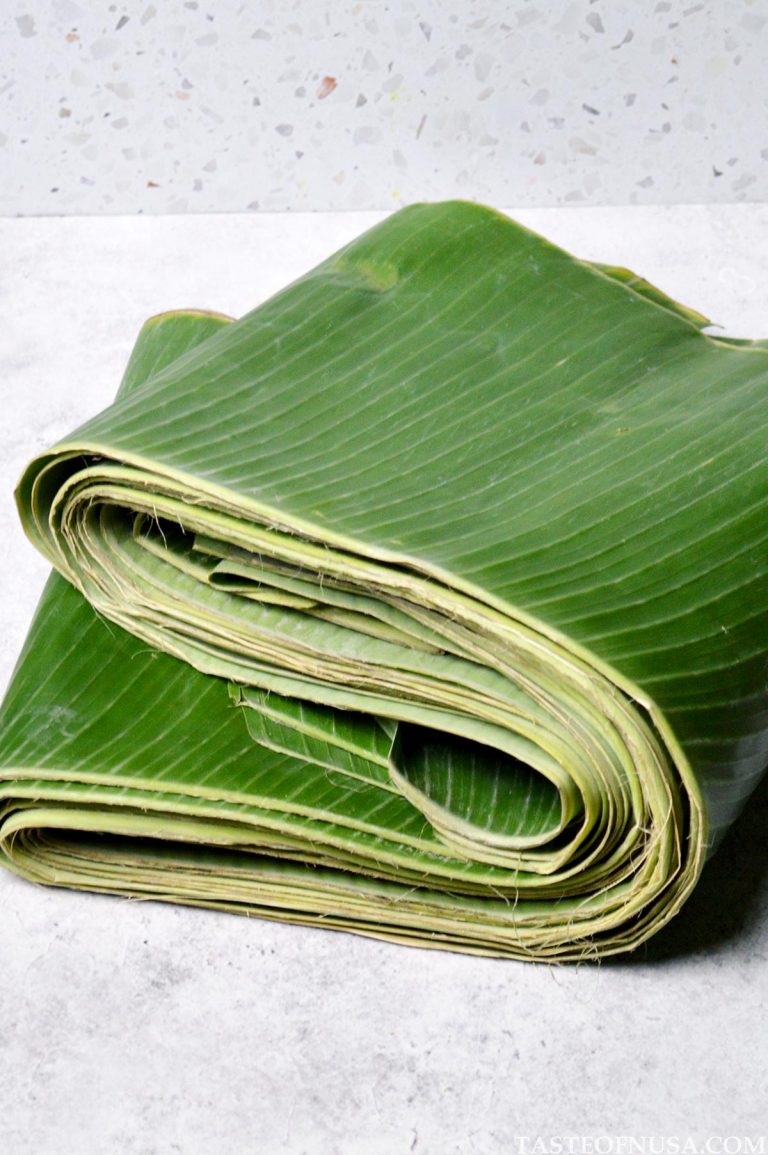Galangal
Galangal, the cousin of ginger with light-colored pink skin, is an important spice in the Indonesian kitchen. A small piece of this root can transform the most ordinary dish into a delectable culinary treat.

Other Names
- Alpinia galanga
- Laos (Indonesian)
- Lengkuas (Malay/Indonesian)
- Siamese ginger
- Thai ginger
- Greater galanga
- Blue ginger
What is Galangal?
Galangal is a spice native to Southeast Asia. The spicy and pungent-tasting root-like rhizome comes from a member of the ginger family (Zingiberaceae). It is grown and used extensively throughout the region along with its well-known cousin ginger. The rhizome has a similar shape and size to ginger, with a distinct pink tinge to the skin.
What Does Galangal Taste Like?
Although it is possible to tell from its flavor that galangal is related to ginger, it nonetheless has a distinctive flavor of its own. Ginger’s spice notes are in the middle, warm range, whereas galangal’s spice notes are more in the upper, fragrant range and tinged with floral, high peppery notes and a touch of camphor. It has a hotter and sharper bite combined with a tangy spicy flavor which, to some people, is reminiscent of hot mustard.
The spice is meant to complement, not dominate the flavor. It is usually combined with many other spices and herbs. Vegetarian or vegetable-based dishes, chicken, fish, and seafood are all galangal’s natural flavor companions. The aroma masks the strong odor of fish and so appears frequently in seafood recipes.
It can also be used on beef, pork, or duck but team it with ginger and/or garlic to bring it down to earth and link its flavors to the richer, earthier flavors of these foods. used this way, galangal is a great balancer to the intensity and richness of heavier foods.
Where to Buy
Compared to other herbs and spices, finding galangal can be a little more difficult in some grocery stores, but it is not impossible. The fresh or frozen root can generally be found in Asian markets or specialty grocery stores where the refrigerated herbs are located. The dried galangal can be found in packaged bags near the spices along with the powder form.
How to Choose
The flesh is woody and more fibrous than ginger and becomes more so as the rhizomes mature. Because of its fibrous structure, it becomes tougher the longer it is out of the ground as it gradually dehydrates, so galangal is best when newly harvested.
For texture, younger rhizomes are preferable, and at this stage, they are commonly used in soups. Meanwhile, the mature ones have a more pronounced and peppery flavor and are central to many curry paste recipes. On young rhizomes, the pink tinge is over a cream skin with green blooms sometimes around the base of the stalks. On older rhizomes, the whole rhizomes become a darker shade of cream to brownish-pink/red.
Look for the smaller tender young galangal that is pinkish in color with minimal blemishes as these will make it vulnerable to mold and decay. In addition, the large roots can be very hard, making slicing a tedious chore.
Fresh vs Dried
Try purchasing fresh or frozen galangal as these forms retain the fullest spectrum of this wonderful spice’s flavors. You may also find dried galangal in large, woody-looking slices packaged in small plastic bags. You can toss it in soups directly, or simply soak the pieces in hot water to rehydrate them like you would do with dried mushrooms.
Galangal powder is more convenient, but it lacks the intense aroma and flavor of fresh, so avoid it and only use it if you really can’t find fresh, frozen, and dried galangal.
Storage
Store fresh root, intact with the skin, in the refrigerator in a plastic bag or airtight container for a week or two. Make sure to keep it as dry as possible, not damp or wet. If you find molds or rotten parts, just cut them and keep the remainder.
It also freezes well for up to two months, but make sure they are well cleaned and kept airtight in a bag, container, or tightly wrapped cling film. Tender young galangal can be frozen whole and taken out as needed to grate. Older rhizomes are best sliced before being frozen. Frozen galangal will lose its firm texture, but it can still be used for recipes that call for it to be minced or mashed.
For the ground form, store in a cool, dark cupboard, away from direct heat or sunlight. It will begin to lose its potency after about six months, and even sooner if exposed to light and heat.
How to Substitute Fresh Galangal with Powder
A rough guide to substitute fresh with ground galangal is 1-inch fresh galangal = 1 tbsp freshly grated galangal = 1 tsp galangal powder.
Galangal Substitute
There is absolutely no substitute for galangal. I have read other sites that you can replace galangal with ginger. Ginger is not a substitute for it. You will never get that elusively sweet, floral aroma and flavor that you get from this rhizome.
How to Prepare
Galangal is usually added to food either in slices, thin strips, or crushed. You need to peel it and remove the top layer before adding it to the recipe because it is denser and harder than ginger. You can also grate it if you prefer.






